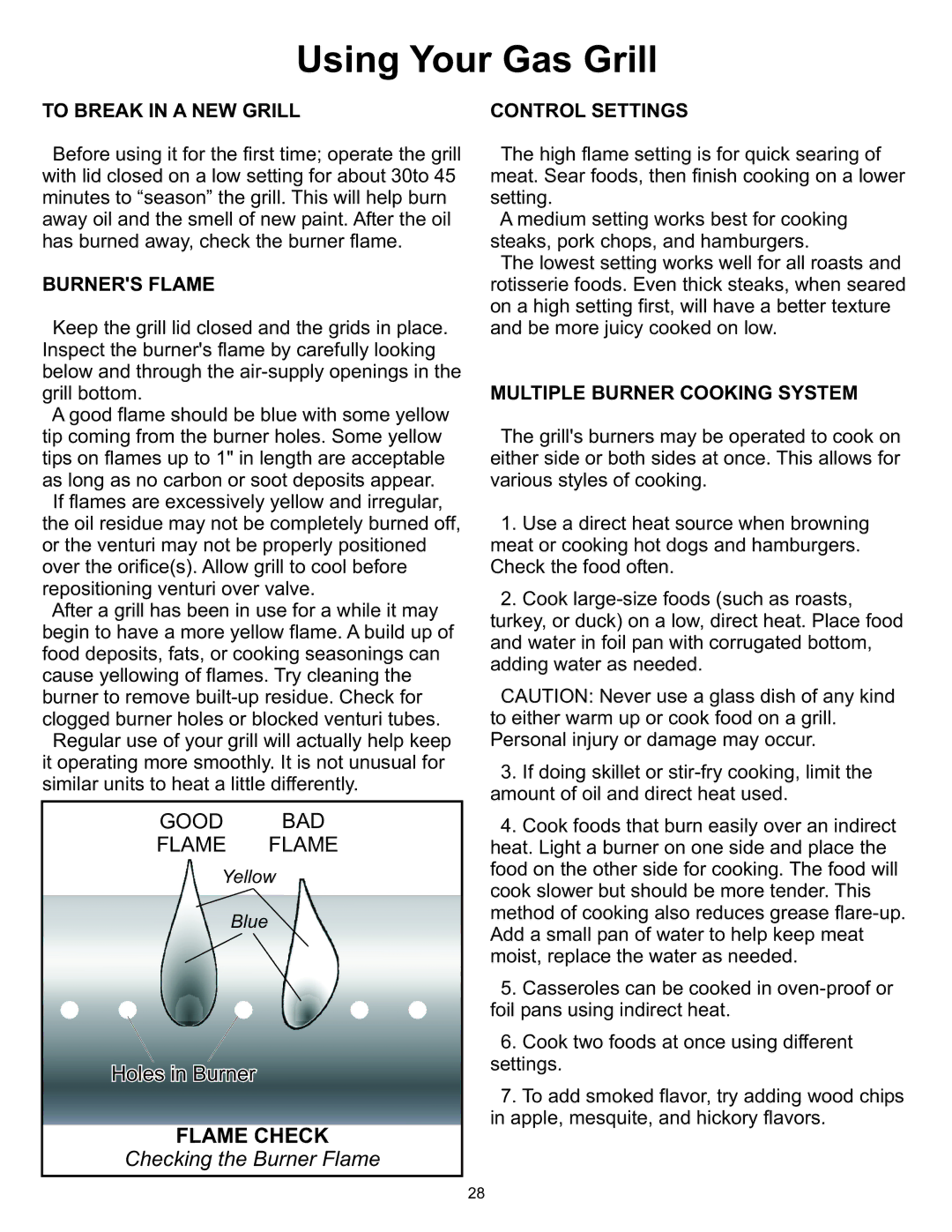Gas Grill specifications
The Vermont Casting Gas Grill is renowned for its combination of quality, performance, and durability, making it a favored choice for avid grillers and outdoor cooking enthusiasts. Built with a commitment to craftsmanship, Vermont Castings has a long legacy of producing high-quality outdoor products, and their gas grill is no exception.One of the standout features of the Vermont Casting Gas Grill is its robust construction. Made with heavy-duty stainless steel, the grill is designed to withstand the elements while providing excellent heat retention and distribution. This ensures that your food cooks evenly, whether you're grilling steaks, vegetables, or seafood. The precision-engineered burners offer an impressive output, allowing for quick preheating and consistent heat even during longer cooking sessions.
The grill typically features multiple cooking zones, thanks to its innovative burner design. This allows you to sear and slow-cook simultaneously, opening up numerous culinary possibilities. Many models also come with an integrated rotisserie burner, an excellent addition for those who enjoy perfectly roasted chicken or other meats.
Another key characteristic of the Vermont Castings Gas Grill is its user-friendly design. Many models include easy-to-use electronic ignition systems, which provide a hassle-free startup each time the grill is fired up. The grills also feature adjustable knobs, allowing for precise temperature control across different cooking zones, ensuring each dish is cooked to perfection.
In addition to performance, the Vermont Casting Gas Grill emphasizes convenience and safety. The grills often include heat-resistant handles and a lid that locks securely to minimize heat loss. A grease management system is also commonly found, making cleanup after grilling sessions both easy and quick.
Vermont Castings prioritizes technology in its grills, integrating advanced features such as infrared burners for increased heat efficiency and flavor enhancement. This technology not only elevates cooking performance but also helps reduce flare-ups, making outdoor grilling safer.
In summary, the Vermont Casting Gas Grill embodies the perfect blend of durability, performance, and innovation. With a focus on quality materials, thoughtful design, and advanced technologies, it stands out as an ideal choice for those looking to elevate their grilling experience. Whether you are a novice or a seasoned grill master, this grill delivers reliability and exceptional results, allowing you to create delicious meals for family and friends while enjoying the great outdoors.

